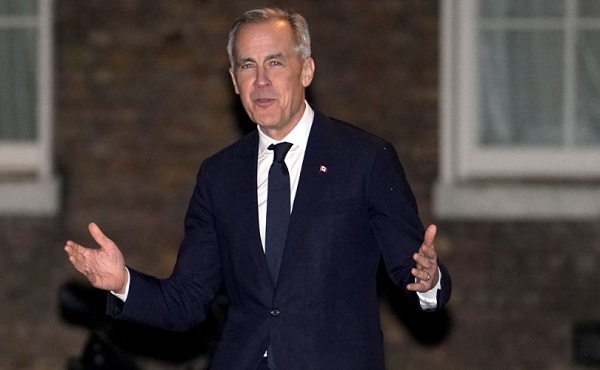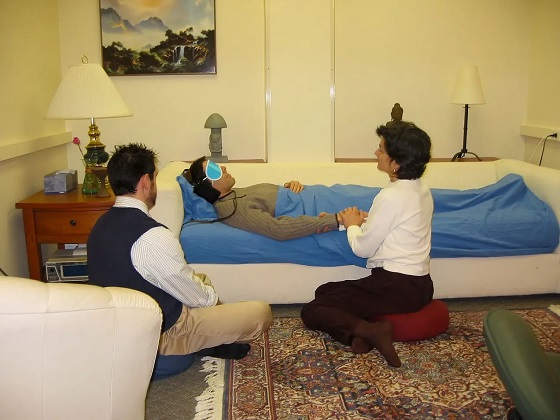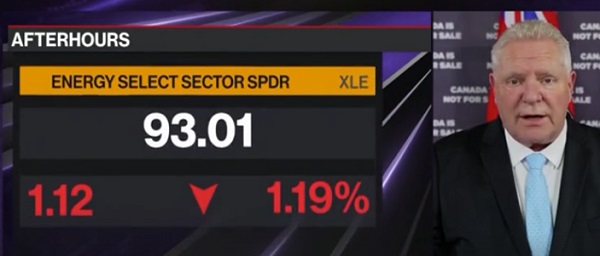Alberta
Update 8: Northwest Alberta wildfire (May 29 at 6 p.m.)

May 29, 2019
Wildfire battles continues as re-entry planning moves forward. To date, the province has provided more than $6 million in one-time, emergency support payments to evacuees.
Current situation
- Chuckegg Creek Wildfire is burning approximately three kilometres southwest of the Town of High Level in Mackenzie County.
- This out-of-control wildfire has grown to more than 150,000 hectares.
- Resources on the ground include about 390 wildland firefighters and staff, 28 helicopters and heavy equipment.
- Cabinet approved two orders in council to release funds to cover emergency response including structural firefighting efforts, evacuation costs, reception centre costs, and recovery costs as well as fire prevention, suppression, reclamation and reforestation costs.
- Parts of northern Alberta remain under a special air quality advisory.
- New mandatory evacuations have been issued for:
- La Crete Ferry Campground
- Steen River
- Hawk Hills
- Keg River
- Carcajou
- Residents living between Township Road 922 and north to Northern Lights County.
- Residents should check Alberta Emergency Alerts for details.
- Officials are preparing for residents to re-enter High Level once public safety has been confirmed.
- Visit emergency.alberta.ca for detailed and frequently updated information.
Financial supports
- You may qualify for the evacuation payment if you were:
- living, working or vacationing in the affected area
- forced to leave due to an evacuation order
- paid for most of your costs to evacuate
- Albertans who qualify will receive $1,250 for each adult and $500 for each dependent child.
- Applications are open:
- Apply online through the MyAlberta Evacuation Payment application using a smart phone, device or desktop. Interac e-transfers may take 24 hours to process.
- Apply in–person at any Alberta Supports Centre in Alberta.
- Evacuees in La Crete and Fort Vermillion can apply in person at La Crete Heritage Centre (25411 Township Road 1060, south of La Crete) or Fort Vermilion Community Cultural Complex (5001 44 Avenue)
- If you require assistance registering, call 310-4455
- If you’re having technical issues, contact My Alberta Digital ID at 1-844-643-2789 (Monday to Friday, 8:15 a.m. to 4:30 p.m.)
Reception and call centres
- Reception centres are open at:
- Slave Lake Legacy Centre (400 6 Avenue NE)
- High Prairie Gordon Buchanan Centre (5413 49 Street)
- Grande Prairie Regional College (10726 106 Avenue)
- Peace River Misery Mountain Ski Hill (10408 89 Street)
- La Crete Heritage Centre (25411 Township Road 1060, south of La Crete)
- Fort Vermilion Community Cultural Complex (5001 44 Avenue)
- Dene Wellness Centre (In K’atl’ Odeeche First Nation, 17 kilometres east of Hay River)
- Hours of operation for evacuation reception centres can be found at emergency.alberta.ca.
- 310-4455 call centre hours are extended until Friday from 8 a.m. to 9 p.m.
Highway closures
- Highway 35 is open between High Level and the Zama City turnoff. Travel is not permitted north of the Zama City turnoff.
- Highway 35 is closed between approximately five km south of High Level and five km north of Highway 695 (Keg River turnoff). Access to Keg River remains open.
- Highway 697 is closed between Highway 35 and Range Road 185, east of the La Crete Ferry.
- The La Crete Ferry is closed.
- Northbound travelers from the Peace River area should detour using Highway 986 to Highway 88.
- Highway 58 remains closed between High Level and approximately 90 km west, at the junction of Range Road 45A (south of Chateh).
- To stay informed on all road closure info visit 511.Alberta.ca or download the mobile app.
Insurance information
- Evacuated residents should retain all their receipts for food purchases, accommodation and other related expenses to provide to their insurer for possible reimbursement.
- Most home and tenant’s insurance policies provide reasonable coverage for living expenses during an evacuation. Contact your insurance company for details.
- Albertans who cannot remember or reach their insurance provider, can contact the Insurance Bureau of Canada at 1-844-227-5422 or by email at [email protected]. Information to understand your fire insurance coverage is online at ibc.ca/ab/disaster/alberta-wildfire.
Justice and legal matters
- Sittings scheduled for Wabasca Desmarais Court on Thursday, May 30 will be heard in High Prairie Court.
- High Level Court is closed. Call the Peace River Court at 780-624-6256 for inquiries on High Level Court matters scheduled for this week and next. All scheduled Fort Vermilion matters will be heard in Peace River. Call the Peace River Court at 780-624-6256 if you’re unable to register your name and phone number. Matters will be held by phone if necessary.
- In many cases, tickets can be paid online. For any other inquiries requiring direction from the court about Peace River and Fort Vermilion court matters, call the Peace River Court at 780-624-6256.
- If you have an appointment with a probation officer in an evacuated area, report to the community corrections office nearest you. If you do not know where the nearest one is, call 780-427-3109 (to call toll free, first dial 310-0000).
- If you are an intermittent server in an evacuated area, call the Peace River Correctional Centre at 780-624-5480 (to call toll-free, first dial 310-0000) for direction.
Education
- Grade 12 students in the High Level area are eligible for an exemption from their diploma exam. When a student is exempt from the diploma exam, their classroom mark will be their final mark.
- These students could also write the exam if they choose to do so and can safely make it to a school, either in their community or another. Students can also defer writing the diploma exams to August.
- For grades 6 and 9 provincial achievement tests, students can be excused from writing. Alternately, these students could write the tests if they can safely make it to a school, either in their community or another.
- Once students and their families have made a decision, they should contact their school division.
Air quality
- Much of northern Alberta is under a special air quality statement.
- Smoke from wildfires in northern Alberta is causing poor air quality and reducing visibility.
- Alberta Wildfire recommends checking FireSmoke.ca to find out where the smoke is coming from.
Boil water advisory
- Boil water advisories remain in place for Meander River (Dene Tha’ First Nation) and North Tall Cree (Little Red River Cree Nation). Although power has been restored, the boil water advisories will remain in place until water testing is complete.
Health
- Mental health support is available by calling Alberta’s 24-hour Mental Health Help Line at 1-877-303-2642.
- Alberta Health Services is providing supports to the receptions centres. These supports include addiction and mental health, indigenous health liaisons, nursing, emergency medical services, public health, home care and more.
Pets and livestock
- Animal Control are collecting household pets that have been left behind. Pets will be moved to a safe and secure location outside of the Town of High Level. Contact 780-926-2201.
- Mackenzie County has stock trailers to assist with livestock transport. Visit highlevel.ca for more information.
Donations and volunteers
- The towns of High Level and Slave Lake are not accepting material donations and do not require volunteers at this time.
- The Town of Slave Lake has set up an online form for offers slavelake.ca/FormCenter/Other-27/High-Level-Evacuation-Volunteer-Sign-Up-159.
- Check the Mackenzie County Facebook page for an up-to-date list of donations needed and drop-off locations.
Canada Post
- Canada Post has suspended mail delivery services in the communities of High Level, Paddle Prairie Metis Settlement, Meander River, Chateh and Keg River.
- Mail will be held at the Edmonton depot until mail service resumes.
- Check the Canada Post website for updates.
Income Support, Alberta Supports and AISH
- Residents receiving benefits from the Assured Income for the Severely Handicapped (AISH) or the Income Support program by cheque rather than electronic deposit, and who are affected by the wildfire in High Level, can visit their nearest Alberta Supports Centre to pick up their cheque.
- If you are in La Crete, you can pick up your cheque at the local reception centre. If you receive your benefits via direct deposit, your payment will be deposited as usual.
- For information on child intervention and child care, residents may contact 1-800-638-0715.
- If persons with developmental disabilities, their families or contracted service providers need human, financial, or in-kind assistance to connect with loved ones, find accommodations or provide assistance to individuals receiving PDD supports, please contact the nearest Alberta Supports Centre for assistance at 1-800-232-7215 province-wide between 7:30 a.m. and 8 p.m., Monday to Friday.
- For additional information on social benefits, affected individuals can contact Alberta Supports or call 1-877-644-9992, Monday to Friday from 7:30 a.m. to 8 p.m.
- Employment insurance: evacuees can visit Service Canada online to apply at canada.ca/en/services/benefits/ei.html. Use code 4812014812201900.
Health card, driver’s licences, ID cards, birth certificate
- To get a replacement Health Care Insurance Card at no cost, you can contact 780-427-1432 or toll free at 310-0000 and then 780-427-1432 when prompted. Your Alberta Personal Health Card can be mailed to a temporary address.
- If driver’s licences, ID cards, and/or birth certificates were left behind during the evacuation, replacement cards and certificates can be ordered free of charge at a registry agent. A list of registry locations can be found at alberta.ca/registry-agents
Public information
- You can call 310-4455 for more information.
Aerial footage of the northwest wildfires
- B-roll of the Chuckegg Creek fire in northwest Alberta, taken Sunday, May 26, can be downloaded here.
Related information
Backgrounder: Previous updates
Alberta
Big win for Alberta and Canada: Statement from Premier Smith

Premier Danielle Smith issued the following statement on the April 2, 2025 U.S. tariff announcement:
“Today was an important win for Canada and Alberta, as it appears the United States has decided to uphold the majority of the free trade agreement (CUSMA) between our two nations. It also appears this will continue to be the case until after the Canadian federal election has concluded and the newly elected Canadian government is able to renegotiate CUSMA with the U.S. administration.
“This is precisely what I have been advocating for from the U.S. administration for months.
“It means that the majority of goods sold into the United States from Canada will have no tariffs applied to them, including zero per cent tariffs on energy, minerals, agricultural products, uranium, seafood, potash and host of other Canadian goods.
“There is still work to be done, of course. Unfortunately, tariffs previously announced by the United States on Canadian automobiles, steel and aluminum have not been removed. The efforts of premiers and the federal government should therefore shift towards removing or significantly reducing these remaining tariffs as we go forward and ensuring affected workers across Canada are generously supported until the situation is resolved.
“I again call on all involved in our national advocacy efforts to focus on diplomacy and persuasion while avoiding unnecessary escalation. Clearly, this strategy has been the most effective to this point.
“As it appears the worst of this tariff dispute is behind us (though there is still work to be done), it is my sincere hope that we, as Canadians, can abandon the disastrous policies that have made Canada vulnerable to and overly dependent on the United States, fast-track national resource corridors, get out of the way of provincial resource development and turn our country into an independent economic juggernaut and energy superpower.”
Alberta
Energy sector will fuel Alberta economy and Canada’s exports for many years to come

From the Fraser Institute
By any measure, Alberta is an energy powerhouse—within Canada, but also on a global scale. In 2023, it produced 85 per cent of Canada’s oil and three-fifths of the country’s natural gas. Most of Canada’s oil reserves are in Alberta, along with a majority of natural gas reserves. Alberta is the beating heart of the Canadian energy economy. And energy, in turn, accounts for one-quarter of Canada’s international exports.
Consider some key facts about the province’s energy landscape, as noted in the Alberta Energy Regulator’s (AER) 2023 annual report. Oil and natural gas production continued to rise (on a volume basis) in 2023, on the heels of steady increases over the preceding half decade. However, the dollar value of Alberta’s oil and gas production fell in 2023, as the surging prices recorded in 2022 following Russia’s invasion of Ukraine retreated. Capital spending in the province’s energy sector reached $30 billion in 2023, making it the leading driver of private-sector investment. And completion of the Trans Mountain pipeline expansion project has opened new offshore export avenues for Canada’s oil industry and should boost Alberta’s energy production and exports going forward.
In a world striving to address climate change, Alberta’s hydrocarbon-heavy energy sector faces challenges. At some point, the world may start to consume less oil and, later, less natural gas (in absolute terms). But such “peak” consumption hasn’t arrived yet, nor does it appear imminent. While the demand for certain refined petroleum products is trending down in some advanced economies, particularly in Europe, we should take a broader global perspective when assessing energy demand and supply trends.
Looking at the worldwide picture, Goldman Sachs’ 2024 global energy forecast predicts that “oil usage will increase through 2034” thanks to strong demand in emerging markets and growing production of petrochemicals that depend on oil as the principal feedstock. Global demand for natural gas (including LNG) will also continue to increase, particularly since natural gas is the least carbon-intensive fossil fuel and more of it is being traded in the form of liquefied natural gas (LNG).
Against this backdrop, there are reasons to be optimistic about the prospects for Alberta’s energy sector, particularly if the federal government dials back some of the economically destructive energy and climate policies adopted by the last government. According to the AER’s “base case” forecast, overall energy output will expand over the next 10 years. Oilsands output is projected to grow modestly; natural gas production will also rise, in part due to greater demand for Alberta’s upstream gas from LNG operators in British Columbia.
The AER’s forecast also points to a positive trajectory for capital spending across the province’s energy sector. The agency sees annual investment rising from almost $30 billion to $40 billion by 2033. Most of this takes place in the oil and gas industry, but “emerging” energy resources and projects aimed at climate mitigation are expected to represent a bigger slice of energy-related capital spending going forward.
Like many other oil and gas producing jurisdictions, Alberta must navigate the bumpy journey to a lower-carbon future. But the world is set to remain dependent on fossil fuels for decades to come. This suggests the energy sector will continue to underpin not only the Alberta economy but also Canada’s export portfolio for the foreseeable future.
-

 Crime2 days ago
Crime2 days agoFirst Good Battlefield News From Trump’s Global War on Fentanyl
-

 2025 Federal Election1 day ago
2025 Federal Election1 day agoWEF video shows Mark Carney pushing financial ‘revolution’ based on ‘net zero’ goals
-

 Break The Needle1 day ago
Break The Needle1 day agoWhy psychedelic therapy is stuck in the waiting room
-

 2025 Federal Election1 day ago
2025 Federal Election1 day agoThree cheers for Poilievre’s alcohol tax cut
-

 2025 Federal Election1 day ago
2025 Federal Election1 day agoMORE OF THE SAME: Mark Carney Admits He Will Not Repeal the Liberal’s Bill C-69 – The ‘No Pipelines’ Bill
-

 2025 Federal Election1 day ago
2025 Federal Election1 day ago‘Coordinated and Alarming’: Allegations of Chinese Voter Suppression in 2021 Race That Flipped Toronto Riding to Liberals and Paul Chiang
-

 2025 Federal Election24 hours ago
2025 Federal Election24 hours ago‘I’m Cautiously Optimistic’: Doug Ford Strongly Recommends Canada ‘Not To Retaliate’ Against Trump’s Tariffs
-

 Automotive1 day ago
Automotive1 day agoTrump Must Act to Halt the Tesla Terror Campaign










